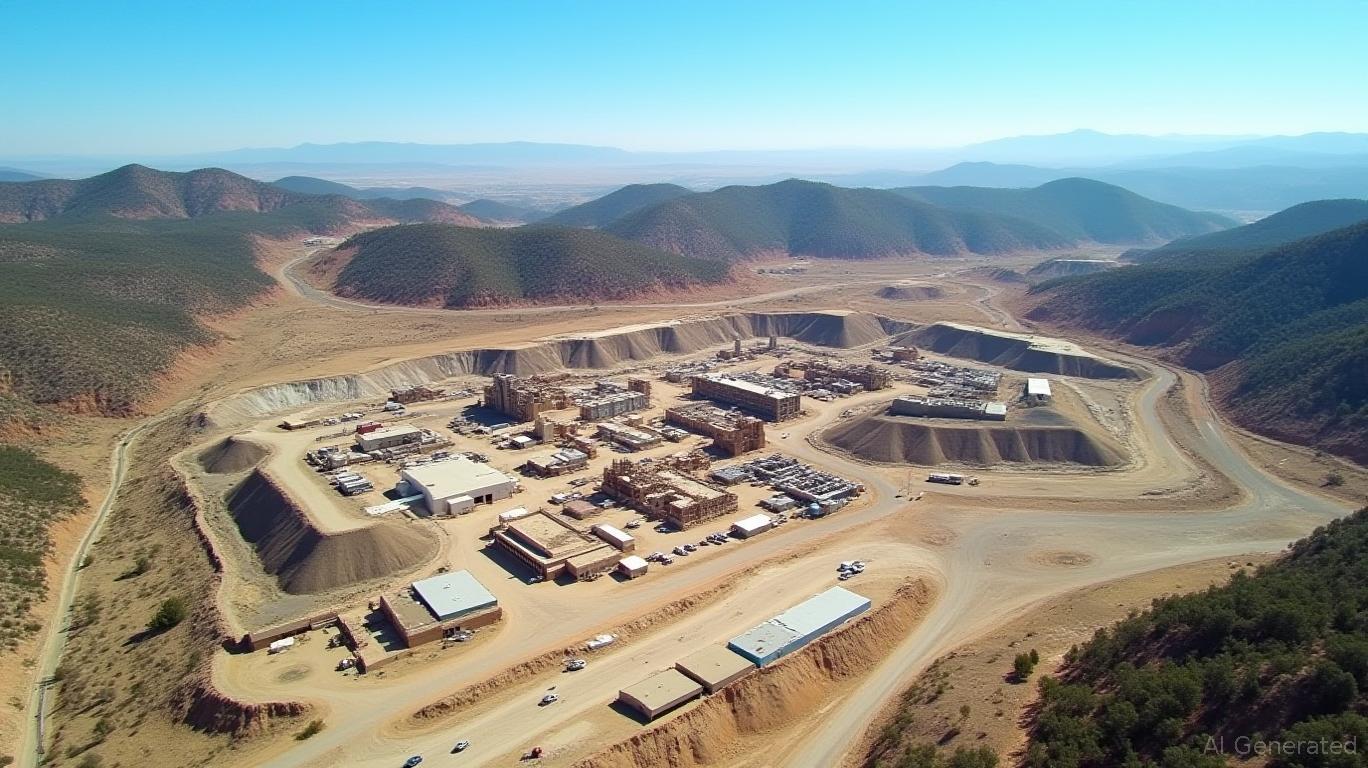Lode Gold Resources: Fremont Mine's Policy Tailwinds and Catalyst-Laden Path to Production
The U.S. critical minerals policy shift under the March 2025 Executive Order has unlocked a rare opportunity for domestic gold producers, and
Resources Inc.'s Fremont Mine stands at the epicenter of this strategic realignment. With its advanced-stage development, underexploited resource base, and alignment with federal incentives, the mine presents a compelling investment case for gold investors seeking exposure to both policy-driven tailwinds and near-term production catalysts.
Policy Alignment: Opportunity Zones and Critical Minerals Prioritization
The Fremont Mine's location within a designated Opportunity Zone offers significant tax incentives for investors, a legacy of the Trump-era policies now amplified by the Biden administration's focus on domestic resource security. The mine's gold deposit qualifies as a “critical mineral” under the 2025 Executive Order, which prioritizes U.S. production to reduce reliance on foreign supply chains. This dual alignment—tax benefits for investors and policy backing for miners—creates a favorable environment for rapid project advancement.
Lode Gold's engagement of strategic advisors in June 2025 underscores its focus on capitalizing on these tailwinds. While the company has not disclosed the advisors' identities, their role in securing partnerships and optimizing project economics is central to its strategy. Their work is aimed at accelerating permitting, securing financing, and positioning Fremont as a flagship asset in the U.S. gold renaissance.
Project Economics: 1.3Moz Resource Base with 92% Untapped Potential
The mine's NI 43-101-compliant resource estimate (MRE 2025) highlights a robust 1.3 million ounces of gold at a 4.4 g/t grade, with only 8% of the deposit extracted historically. This low extraction rate points to massive scalability: the current plan targets initial production of 100,000+ ounces annually, rising to 130,000 ounces if gold prices remain robust. Notably, the deposit remains open at depth and along strike, with step-out drilling revealing mineralized structures at 1,300 meters—a
The shift to 100% underground mining, as opposed to the prior open-pit plan, is a strategic pivot that reduces environmental permitting risks and aligns with the mine's high-grade core. Historical grades of 10.7 g/t in pre-WWII operations suggest that modern techniques could unlock premium value from the remaining resource.
Near-Term Catalysts: A 2025-2026 Roadmap for Progress
The next 12–18 months are critical for Lode Gold, with milestones designed to de-risk the project and advance it toward production:
- Mine Rehabilitation & Access: Rehabilitating 2 kilometers of underground workings and gaining access to two adits (out of 14 total) will unlock access to high-grade zones, enabling early-stage production.
- Resource Upside: sampling and metallurgical studies aim to upgrade 40% of inferred resources to the Measured & Indicated (M&I) category, enhancing bankability for financing.
- Pre-Feasibility Study (PFS): Due in late 2026, the PFS will evaluate bulk underground mining methods and cost efficiencies, leveraging the mine's existing 23km of workings and 43,000m of drilling.
- Spinout Execution: The separation of Canadian assets into Gold Orogen removes operational complexity, focusing capital on the high-potential Fremont project.
Investment Thesis: A Rare Confluence of Risk/Reward
Fremont's brownfield status—boasting existing infrastructure, permits, and a skilled local workforce—lowers execution risk compared to greenfield projects. Combined with the 8% extracted resource, the mine's scalability to 100,000+ ounces annually at a $1,750/oz gold price creates a low-cost, high-margin production profile.
The policy tailwinds are equally compelling: the Opportunity Zone tax incentives and critical minerals prioritization reduce investor and regulatory friction, while the PEA's positive economics at $1,750/oz suggest resilience even if gold prices moderate.
Risks & Considerations
- Permitting Delays: While the shift to underground mining simplifies environmental hurdles, community relations and regulatory timelines remain variables.
- Gold Price Volatility: A prolonged dip below $1,700/oz could pressure economics, though Fremont's high-grade ore offers buffer.
Conclusion: A Strategic Entry Point
Lode Gold's Fremont Mine exemplifies the “best of both worlds” for gold investors: it benefits from U.S. policy tailwinds, boasts a world-class resource, and is backed by a disciplined development roadmap. With shares trading at a significant discount to peers (e.g., less than 0.4x net asset value per ounce vs. industry averages of 0.6–0.8x), the stock presents a high-conviction opportunity to capture the confluence of policy support, scalability, and near-term catalysts. Investors should prioritize this name as the gold sector's next frontier of growth.
Recommendation: Buy Lode Gold Resources with a 12-month price target of CAD 2.00/share, contingent on positive PFS results and strategic financing.

Comments
No comments yet